The InSight Martian Lander
Probing Mars’ Deep Interior
NASA's InSight Mars mission is a soft lander equipped with a seismometer and heat transfer probe to perform geophysical studies of Mars’ deep interior. The InSight lander will also monitor Mars' weather while studying its inner structure to further develop our knowledge not only of Mars’ development but also the other terrestrial planets of the inner solar system (including Earth) during the early solar system.

InSight Lander Fast Summary Facts
- Type: Lander
- Destination: Mars
- Status: Active
- Launch Location: Vandenberg Air Force Base, California
- Launch Date: May 5th 2018
- Arrival Date: November 26th 2018
- Mission Duration: 7 month cruise, 728 days surface operations
Cool Fun Facts All About NASA’s Insight Mission!
- The name InSight stands for ‘Interior Exploration using Seismic Investigations, Geodesy and Heat Transport’.
- The InSight mission is similar in design to the Mars Phoenix lander that successfully landed near Mars’ north pole in 2007 and studied Mars’ ground ice.
- InSight set out to understand the evolutionary formation of inner solar system’s rocky planets (like Mercury, Venus and Earth), by investigating the interior structure and processes of Mars which have largely been frozen in time for several billion years.
- The science objectives of InSight will be achieved through the use of its two main instruments; a seismometer to measure the planets interior structure (by monitoring the vibrations from mars-quakes, meteor bursts or meteorite strikes) and a heat flow probe that will measure how much heat is coming from Mars’ core!
- The InSight lander is quite wide measuring 6.1 m (20 feet) tip-to-tip across its solar panels and cost about $425 million USD to build.
- The InSight spacecraft only weighs 360 kilograms (794 lb) and was launched aboard the Atlas V rocket.
- The InSight lander will land near Mars’ equator as the spacecraft utilizes solar panels for power generation so needs year-round sunlight.
- The landing zone, Elysium Planitia, met all the requirements of the ideal landing zone, such as;
- Be near the equator for sufficient sunlight for the solar panels year round
- Have a low elevation to allow for sufficient atmospheric braking during its fiery entry
- The zone needs to be flat and relatively rock-free
- The ground should be soft enough to allow the heat flow probe to penetrate well into the ground
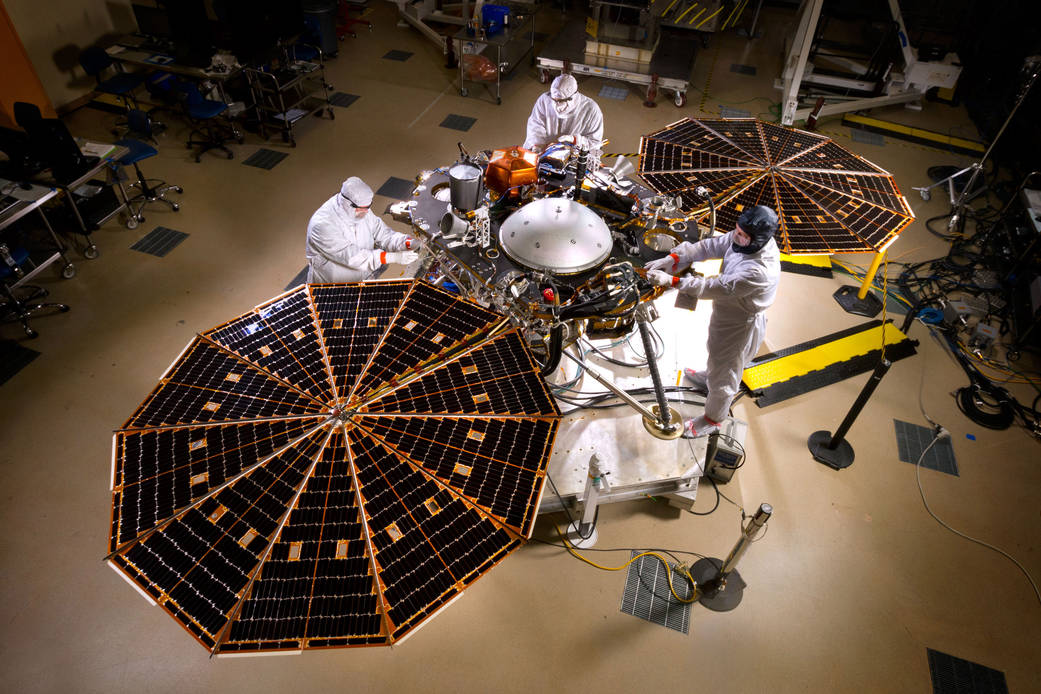
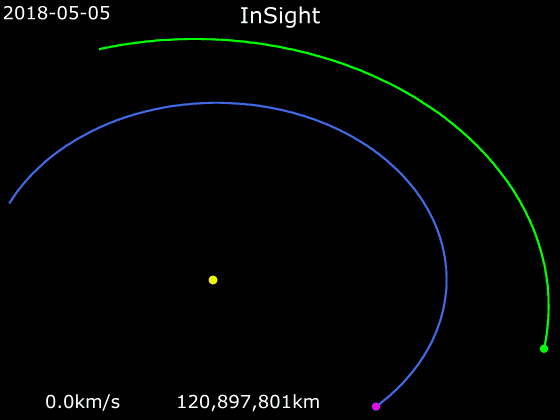
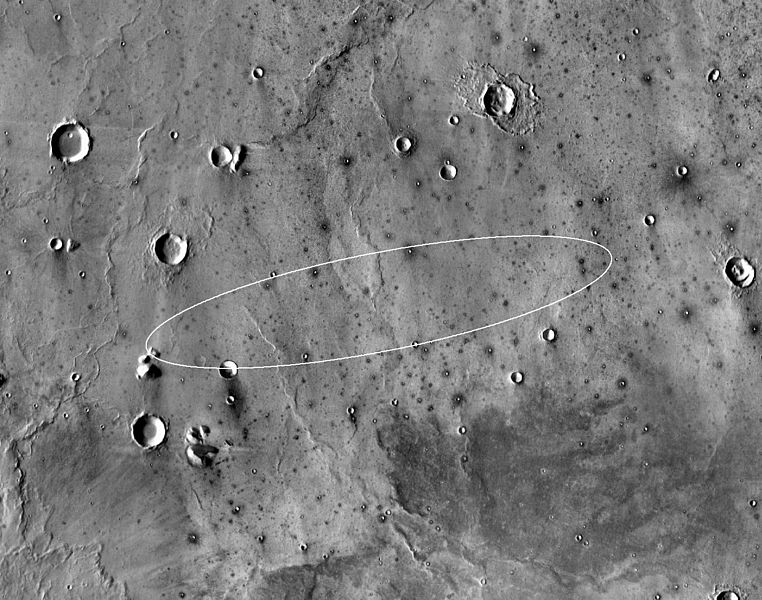
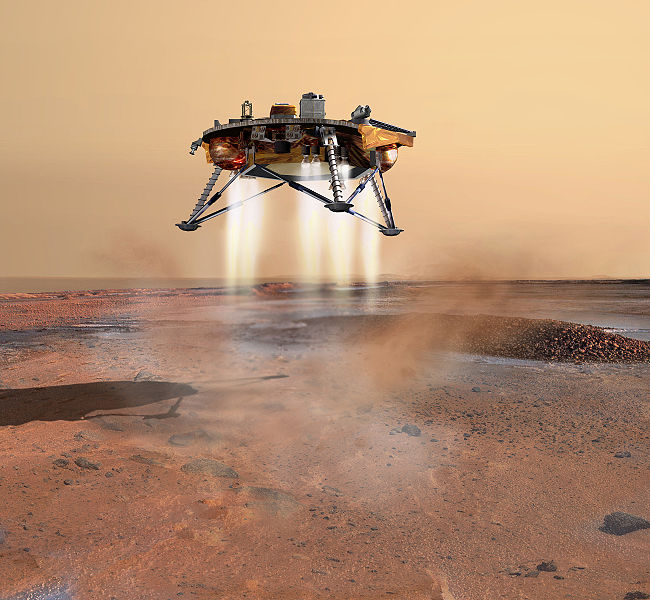
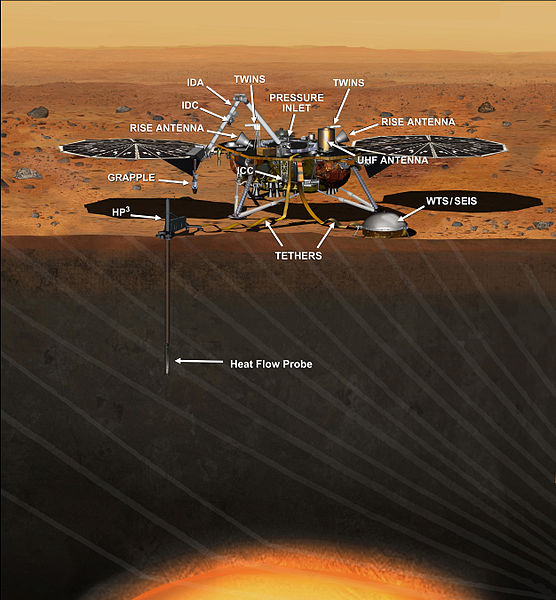
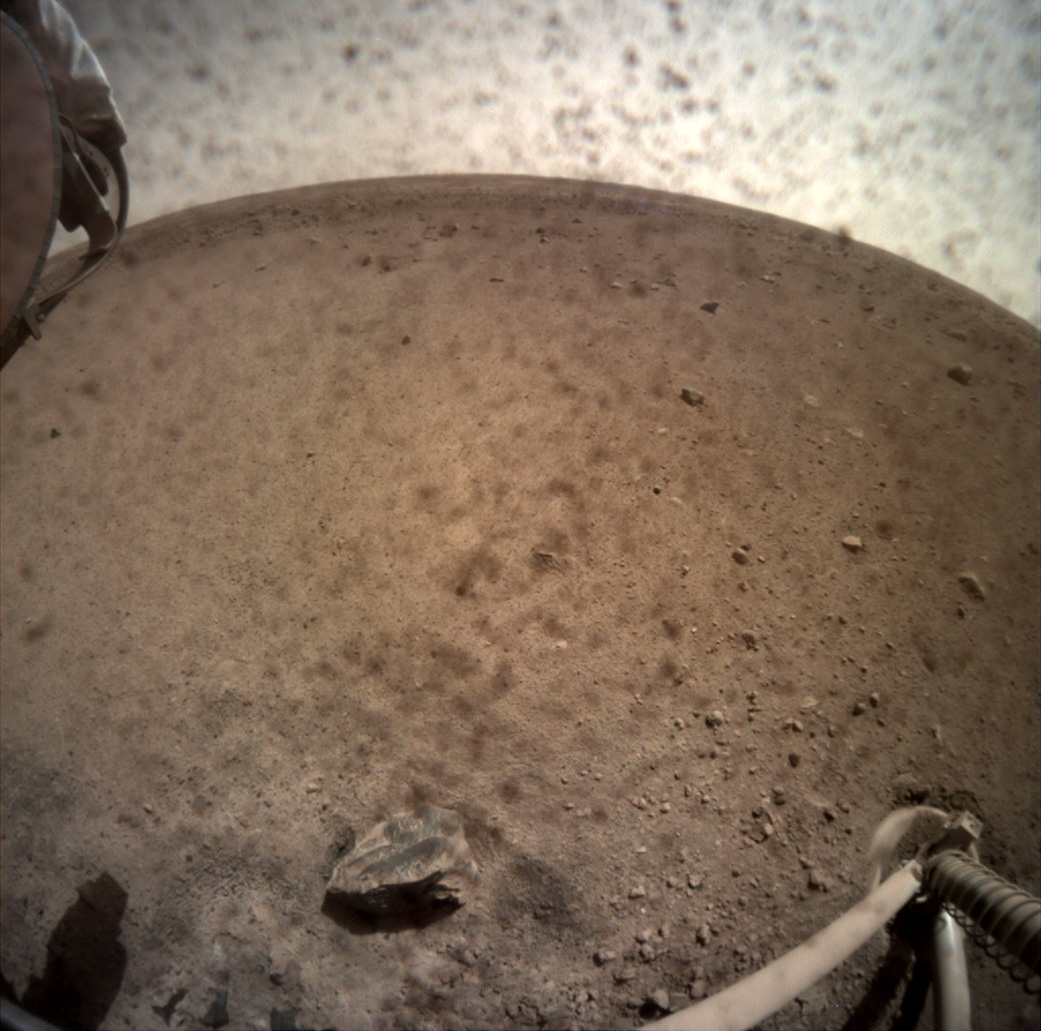
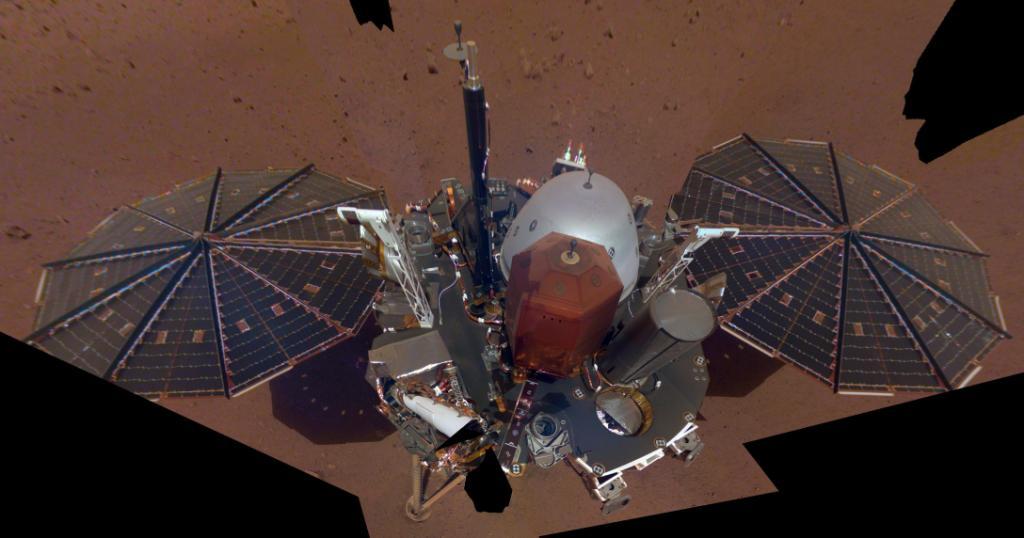
InSight Solar Array Deployment
InSights trajectory
InSight Landing Target
Phoenix landing
Concept of InSight
InSight and Mars
InSight Selfie


